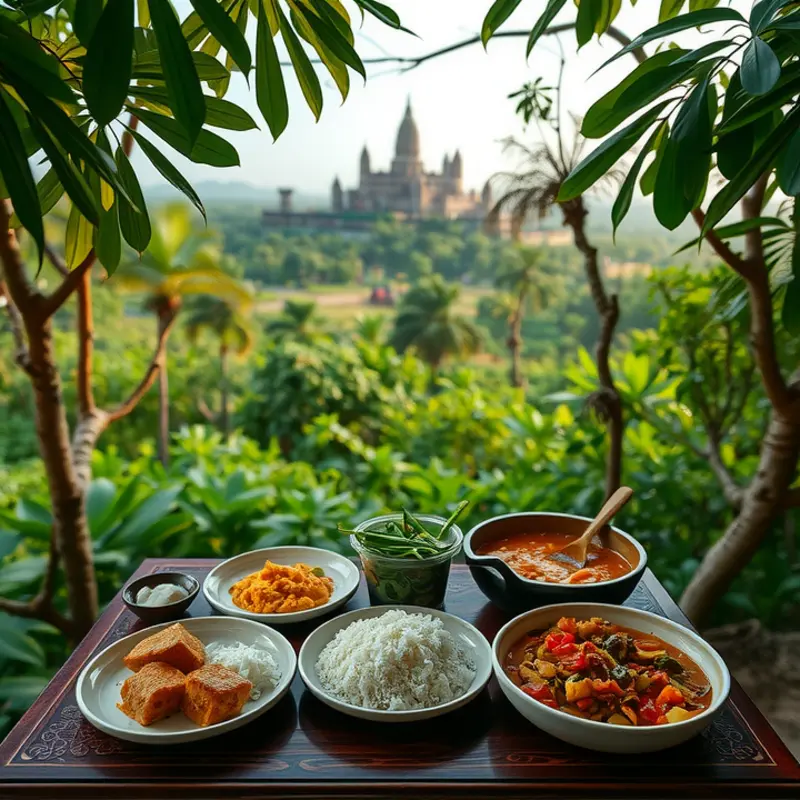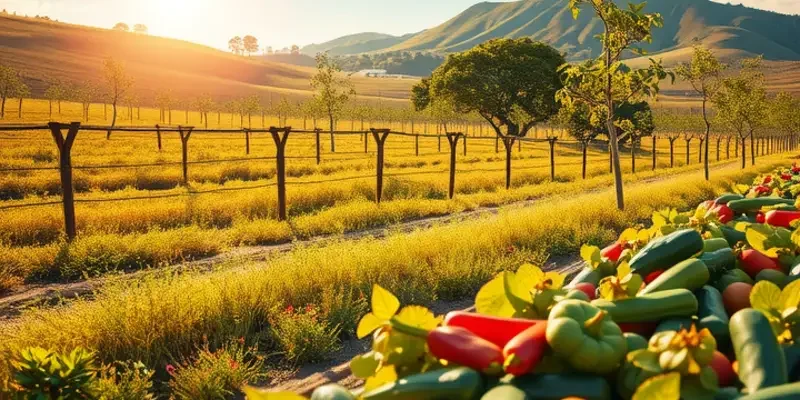Cambodia’s culinary landscape embodies a harmonious blend of history, culture, and natural bounty. From fragrant Khmer dishes to vibrant street food, each meal tells a story of tradition and community. This exploration invites food enthusiasts and culturally-curious readers to savor the nuanced flavors and unique ingredients that define Cambodian cuisine.
The Heart of Khmer Cuisine: Ingredients and Influences

Cambodian cuisine is a harmonious blend of flavors deeply rooted in its geography and rich cultural tapestry. Central to Khmer cooking are the aromatic herbs, spices, and staple ingredients that define its unique culinary identity.
One cannot discuss Cambodian food without mentioning rice. It is more than an everyday staple; it is the backbone of nearly every meal. With the Mekong River and Tonle Sap Lake providing fertile grounds for rice cultivation, its significance in Cambodian dishes reflects the country’s agricultural reliance on this vital grain. Cambodians prefer fragrant long-grain rice, which complements the bold flavors of their cuisine. Often, rice serves as the backdrop for a diverse array of accompaniments, balancing the harmony of flavors intrinsic to Khmer cooking.
Thai influences can be seen in the use of lemongrass and kaffir lime, which infuse dishes with a citrusy aroma. Meanwhile, Cambodia’s history of trade and interaction with neighboring countries is evident in its use of amok trey, a fish mousse steamed in banana leaves. This dish showcases aromatic herbs, coconut milk, and a kroeung paste—an exemplary blend of lemongrass, turmeric, and garlic.
Another vital ingredient is prahok, a fermented fish paste that provides a potent umami flavor. Prahok’s pungency is balanced with a touch of sweetness from palm sugar, a testament to the Cambodian palate’s appreciation for the sweet-savory interplay. This ingredient holds a cultural and historical significance, often serving as a dietary staple in resource-scarce regions.
Cambodia’s proximity to water bodies ensures a regular supply of fish, influencing Khmer culinary practices. Freshwater fish, particularly from the Tonle Sap, are integral to many dishes. Seafood preparation techniques often involve grilling and steaming methods, effectively highlighting the freshness of the ingredients. For more insights into seafood preparation techniques, consider exploring speedy seafood prep.
The use of herbs like cilantro and basil further enrich Cambodian cuisine. These herbs are often added fresh at the end of cooking, bursting with flavor and adding a herbaceous note to dishes. The combination of these herbs and spices is what gives Cambodian food its unique depth and identity, blending flavors seamlessly across various dishes.
Khmer cuisine also highlights the harmony between land and water, with farming practices extending to livestock. Cattle, poultry, and pigs are not merely sources of protein but are ingrained in the cultural fabric, celebrated during festivals and communal feasting. The cyclical nature of agriculture—seed, harvest, and feasting—mirrors the rhythm of life itself.
In summary, Cambodian cuisine is a rich tapestry woven from a variety of influences, both geographical and cultural. Its reliance on aromatic spices, herbs, and staple ingredients such as rice and fish underscores its agricultural bounty while reflecting a past intimately connected with its neighbors. Through its flavors and techniques, Khmer food narrates a story of adaptation and cultural exchange, resonating with its historical journey and culinary evolution.
Signature Dishes: A Culinary Journey Through Cambodia

Embarking on a flavorful journey through Cambodia offers a unique lens into the nation’s culture and traditions. At the heart of this expedition are dishes like Amok, a creamy and fragrant fish curry, and Lok Lak, a beloved beef stir-fry that embodies simplicity infused with tradition. These dishes are more than meals—they are narratives of a rich heritage.
Amok, often considered Cambodia’s national dish, is a delightful interplay of ingredients and flavors that renders a harmonious balance. Fish slices are encased in banana leaves, simmered in a blend of coconut milk, kroeung (a traditional lemongrass paste), and other aromatic spices. This method of preparation, resembling a gentle steam bath within nature’s bowl, enhances the delicate fish while allowing the spices to seep through slowly, resulting in a dish that’s as much a feast for the senses as it is for the palate. Regional variations introduce unique twists, with some areas opting for river fish or adding kaffir lime leaves for a touch of citrus.
While Amok captivates with its complexity, Lok Lak charms through its simplicity. This dish features tender beef cubes stir-fried with a concoction of lime juice, garlic, and Kampot pepper—a Cambodian specialty. Served with a tangy dipping sauce and often a side of rice or a fried egg, Lok Lak is a reflection of everyday dining that does not compromise on flavor. The Kampot pepper, in particular, elevates this dish, enhancing its characteristic spicy undertones. Such nuances can be explored further through guides on flavor combinations without overusing salt.
Beyond these signature dishes, Cambodia’s street food scene is an equally integral part of its culinary fabric. Bustling markets overflow with vendors offering a smorgasbord of bite-sized delights like Num Pang, the Cambodian sandwich, and Bai Sach Chrouk, marinated pork over rice, both serving as symbols of communal dining traditions. The markets, alive with sounds, smells, and camaraderie, highlight the deeply ingrained practice of sharing food as a way to bond both families and strangers.
This vibrant street food culture thrives on communal dining spaces, favoring shared tables over solitary eating. The act of sharing adds a layer of cultural significance to meals, emphasizing not just what is eaten, but the experience of dining collectively. Each shared meal becomes a tapestry woven with stories and laughter, often enjoyed with a variety of sauces that can benefit from thoughtful storage solutions, as found in guides on safer storage practices.
Thus, as we savor the intricate layers of Amok or the straightforward joy of Lok Lak, we are immersed not just in flavors, but in a journey through history and community. Cambodian cuisine is a dialogue between the past and present, between earth’s produce and human creativity, promising a taste of the country’s rich legacy in every bite.
Final words
Cambodian cuisine is a beautiful tapestry woven from rich historical traditions, diverse ingredients, and community spirit. Each dish not only delights the palate but also serves as a window into the heart of Khmer culture. By embracing the flavors and practices of Cambodian cooking, food enthusiasts can truly appreciate the stories told through these meals. Whether dining at a street stall or a home-cooked family meal, the essence of Cambodia comes alive through its food, inviting us all to partake in its culinary celebrations.








